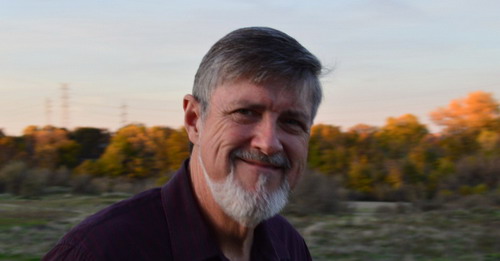| Welcome |
|
April 18, 2021
Strength, Flexibility & Balance
Hi ,
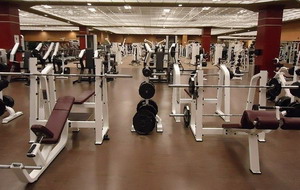 As gyms and classes start opening up again after being closed down for almost a year, I am getting more questions about what exercises folks should do to recover from a year of not exercising. I am getting more people coming in with minor injuries from getting more physically active since the last couple of
weekends have been so beautiful. So between new gardens and yoga classes, many folks are feeling what happens when you remain inactive for too long. As everyone knows by now, the body runs on the “use it or lose it” principle. The survival mechanism built into the body is to always conserve energy. This is because through most of human history food was scarce. This meant that survival was a constant balancing act between maintaining body functions while
reducing the need for food. Any function that your body concludes you are not needing for survival right now, it stops feeding. It decides need based on how often do you use that function. So if you lift 10 pounds several times a day, your body will feed enough muscles to be able to do that. If you try to lift 50 pounds only once a month, the body figures you don't really need to be doing that since the challenge comes up so infrequently. As gyms and classes start opening up again after being closed down for almost a year, I am getting more questions about what exercises folks should do to recover from a year of not exercising. I am getting more people coming in with minor injuries from getting more physically active since the last couple of
weekends have been so beautiful. So between new gardens and yoga classes, many folks are feeling what happens when you remain inactive for too long. As everyone knows by now, the body runs on the “use it or lose it” principle. The survival mechanism built into the body is to always conserve energy. This is because through most of human history food was scarce. This meant that survival was a constant balancing act between maintaining body functions while
reducing the need for food. Any function that your body concludes you are not needing for survival right now, it stops feeding. It decides need based on how often do you use that function. So if you lift 10 pounds several times a day, your body will feed enough muscles to be able to do that. If you try to lift 50 pounds only once a month, the body figures you don't really need to be doing that since the challenge comes up so infrequently.
 The important message from this understanding is that we must challenge our body frequently to keep it in shape. Working out once a month is basically worthless. Many studies have been done to see just how often we need to challenge our bodies, and the results vary depending upon which functions we are talking
about. In general, however, the average need is to challenge the body every three to five days. This is true for bone strength as much as muscle mass as long as these tissues are at least used normally every day. This caveat becomes critical when normal use is not available, like in zero gravity situations on the space station, or when someone is confined to bed. Many years ago a study was performed confining a group of men to bed for two weeks. They then
studied how much strength and coordination they lost. In two weeks they lost 50% of their strength and a huge amount of coordination. Half the men were rehabilitated and the other half sent home to recover on their own. Thirty years later they retested these men and the impact of the bed confinement was still measurable – less in the men that had been rehabbed, but it still showed compared to the control group that was not confined to bed but still measured. This
shows you how much we need to be using our bodies all the time. The important message from this understanding is that we must challenge our body frequently to keep it in shape. Working out once a month is basically worthless. Many studies have been done to see just how often we need to challenge our bodies, and the results vary depending upon which functions we are talking
about. In general, however, the average need is to challenge the body every three to five days. This is true for bone strength as much as muscle mass as long as these tissues are at least used normally every day. This caveat becomes critical when normal use is not available, like in zero gravity situations on the space station, or when someone is confined to bed. Many years ago a study was performed confining a group of men to bed for two weeks. They then
studied how much strength and coordination they lost. In two weeks they lost 50% of their strength and a huge amount of coordination. Half the men were rehabilitated and the other half sent home to recover on their own. Thirty years later they retested these men and the impact of the bed confinement was still measurable – less in the men that had been rehabbed, but it still showed compared to the control group that was not confined to bed but still measured. This
shows you how much we need to be using our bodies all the time.
 The next question is how much of a challenge do we need to stay fit? How intensely do we need to work out? With muscles that means pushing your muscles to their limit a couple of times a week. That is not as bad as that sounds. If you are performing a bodyweight exercise or lifting a weight, the idea
is to use that muscle to a point of fatigue or failure. When I am doing super slow exercises I will reach fatigue in about eight reps, so it takes about a minute with each exercise. For bone strength in the hips, you need to push three to four times your body weight for 10 seconds a few times a couple of times a week. Endurance requires similar training, pushing yourself to fatigue a couple of times a week. For maintaining balance, doing several balance exercises a couple
of times a week will keep things at a status quo. Significant stretching follows a similar pattern. What is special about this timing? Every time you do something that pushes you to your personal limit, you communicate to your body that you need to function to at least this level of ability. But at your limit, tiny micro-injuries occur in the tissues being worked. It is the chemicals that are released in the injury that tell the body to build or restructure the
tissues. These injuries take two to three days to heal. This is where the twice-a-week timing comes from in the body – the time the body needs to heal from micro-injuries. The next question is how much of a challenge do we need to stay fit? How intensely do we need to work out? With muscles that means pushing your muscles to their limit a couple of times a week. That is not as bad as that sounds. If you are performing a bodyweight exercise or lifting a weight, the idea
is to use that muscle to a point of fatigue or failure. When I am doing super slow exercises I will reach fatigue in about eight reps, so it takes about a minute with each exercise. For bone strength in the hips, you need to push three to four times your body weight for 10 seconds a few times a couple of times a week. Endurance requires similar training, pushing yourself to fatigue a couple of times a week. For maintaining balance, doing several balance exercises a couple
of times a week will keep things at a status quo. Significant stretching follows a similar pattern. What is special about this timing? Every time you do something that pushes you to your personal limit, you communicate to your body that you need to function to at least this level of ability. But at your limit, tiny micro-injuries occur in the tissues being worked. It is the chemicals that are released in the injury that tell the body to build or restructure the
tissues. These injuries take two to three days to heal. This is where the twice-a-week timing comes from in the body – the time the body needs to heal from micro-injuries.
 How much is too much? If you are in a great deal of pain for a couple of days after your workout then you have done too much for maintenance. Professional athletes, dancers, and weight lifters do experience this type of regular pain as they are always pushing for more ability. But for us regular folks, a
little muscle stiffness or soreness is all we want to expect. How much is too much? If you are in a great deal of pain for a couple of days after your workout then you have done too much for maintenance. Professional athletes, dancers, and weight lifters do experience this type of regular pain as they are always pushing for more ability. But for us regular folks, a
little muscle stiffness or soreness is all we want to expect.
 You can exercise every day, stretch every day, and do balance activities every day within your normal range of comfort. This should not produce micro-injuries that need healing. This is only a concern when you push to your limit in order to tell your body how much you want to be able to do. So regular
comfortable activities are where we are designed to live 99% of the time. The uncomfortable pushed-to-the-limit activities tell our body just what limits we want to have. For instance, if all you lift with your right arm is 10 pounds max, in short order 10 pounds is all you will be able to lift. If you want to be able to increase your strength, or flexibility, or balance, you have to push yourself a little further into your uncomfortable zone repeatedly to tell your body to
adapt to the increased demand you want it to do. This is what weight lifters do as an obvious example. But in reality, this is what everyone does to improve their performance in any physical task – regularly challenging the body to do a little bit more than it can presently do. This is called training or practice. You can exercise every day, stretch every day, and do balance activities every day within your normal range of comfort. This should not produce micro-injuries that need healing. This is only a concern when you push to your limit in order to tell your body how much you want to be able to do. So regular
comfortable activities are where we are designed to live 99% of the time. The uncomfortable pushed-to-the-limit activities tell our body just what limits we want to have. For instance, if all you lift with your right arm is 10 pounds max, in short order 10 pounds is all you will be able to lift. If you want to be able to increase your strength, or flexibility, or balance, you have to push yourself a little further into your uncomfortable zone repeatedly to tell your body to
adapt to the increased demand you want it to do. This is what weight lifters do as an obvious example. But in reality, this is what everyone does to improve their performance in any physical task – regularly challenging the body to do a little bit more than it can presently do. This is called training or practice.
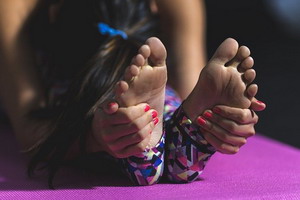 Years ago I took martial arts training. One of the basic “exercises” was to simply sit on the floor and bend forward. The idea was to slowly touch our toes. My hamstring muscles in the back of my legs were so tight and shortened I could barely reach below my kneecaps when my legs were
completely flat against the floor. I did this exercise several times a week for a full year. By the time the year came to an end, I could wrap my hands around my feet and rest my head on my legs. I was never comfortable doing this stretching exercise because I was always pushing my limit. But my limits expanded. On the flip side, once I stopped training at that school and stopped doing that stretch regularly, the flexibility I had gained in my hips and legs went
right back to where it was before I started that class. I had stopped asking my body to flex that much, so it regressed down to what I was regularly asking it to do. Years ago I took martial arts training. One of the basic “exercises” was to simply sit on the floor and bend forward. The idea was to slowly touch our toes. My hamstring muscles in the back of my legs were so tight and shortened I could barely reach below my kneecaps when my legs were
completely flat against the floor. I did this exercise several times a week for a full year. By the time the year came to an end, I could wrap my hands around my feet and rest my head on my legs. I was never comfortable doing this stretching exercise because I was always pushing my limit. But my limits expanded. On the flip side, once I stopped training at that school and stopped doing that stretch regularly, the flexibility I had gained in my hips and legs went
right back to where it was before I started that class. I had stopped asking my body to flex that much, so it regressed down to what I was regularly asking it to do.
 As I have said many times before, there are no plateaus in health. We are either building abilities or losing them. Unfortunately what this means on a very practical level is that if you are trying to stay comfortable all the time, you are sliding downhill. Just maintaining your health means regularly
pushing into uncomfortable territory. Growing or increasing ability calls for a lot more pushing into the uncomfortable. This reality is not what people want to hear, even though they already know this from experiencing life. So many people are looking for the magic pill that will take away the “work” of staying healthy. (I see work as that demand to do stuff that does not feel good and that I don't really want to do.) I would rather play and enjoy
life, doing things I like to do, like my practice. What I am grateful for is that pushing into the uncomfortable zone only needs to be engaged maybe 1% of the time, and I can enjoy the benefits the other 99% of the time. As I have said many times before, there are no plateaus in health. We are either building abilities or losing them. Unfortunately what this means on a very practical level is that if you are trying to stay comfortable all the time, you are sliding downhill. Just maintaining your health means regularly
pushing into uncomfortable territory. Growing or increasing ability calls for a lot more pushing into the uncomfortable. This reality is not what people want to hear, even though they already know this from experiencing life. So many people are looking for the magic pill that will take away the “work” of staying healthy. (I see work as that demand to do stuff that does not feel good and that I don't really want to do.) I would rather play and enjoy
life, doing things I like to do, like my practice. What I am grateful for is that pushing into the uncomfortable zone only needs to be engaged maybe 1% of the time, and I can enjoy the benefits the other 99% of the time.
 The bottom line here is to embrace the need to step into doing a little bit of uncomfortable stuff regularly to keep strength, flexibility, and balance an ongoing part of your life. I see a big part of the aging process happening simply because when people get older they want to be comfortable. They stop
challenging their bodies. Without that challenge, everything goes down the tubes, and health is lost. The good news is that you can reengage the challenge process at any time. You can rebuild with sufficient work (meaning doing the uncomfortable stuff.) I have many examples of folks in their 80's that are in excellent physical shape because of regularly challenging themselves with activities like running, yoga, bicycling, tennis, golf, or hiking. The list goes on and
on. I also have lots of folks of all ages that are in terrible shape because their lifestyle involves no physical challenges. Their lives are all about sitting in front of a computer, or television, or gaming console. They think that by staying comfortable that they are avoiding pain. But the truth is, they have way more pain than the physically active folks have... at least in my experience with patients. The bottom line here is to embrace the need to step into doing a little bit of uncomfortable stuff regularly to keep strength, flexibility, and balance an ongoing part of your life. I see a big part of the aging process happening simply because when people get older they want to be comfortable. They stop
challenging their bodies. Without that challenge, everything goes down the tubes, and health is lost. The good news is that you can reengage the challenge process at any time. You can rebuild with sufficient work (meaning doing the uncomfortable stuff.) I have many examples of folks in their 80's that are in excellent physical shape because of regularly challenging themselves with activities like running, yoga, bicycling, tennis, golf, or hiking. The list goes on and
on. I also have lots of folks of all ages that are in terrible shape because their lifestyle involves no physical challenges. Their lives are all about sitting in front of a computer, or television, or gaming console. They think that by staying comfortable that they are avoiding pain. But the truth is, they have way more pain than the physically active folks have... at least in my experience with patients.
Hopefully, this gives you some idea of just what is needed to keep your body serving your needs throughout your life. Keep engaged, embrace a little bit of challenge, and enjoy the benefits.
Take care,
David
Now available, Dr. Dave's Ice Cream Mix - only $10
Just add the mix to a can of coconut milk and blend it on high until it becomes somewhat foamy. Add the flavors or fruit of your choice - chocolate, vanilla, raspberry, root beer, even orange juice concentrate - let your imagination go wild! Put everything into a 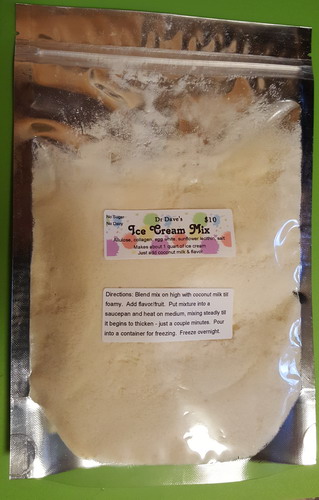 saucepan and gently heat the mixture while stirring constantly until
it just begins to thicken. Take off heat immediately and then pour everything into a container to put into your freezer. In 8 to 12 hours your personal flavor of dairy free sugar free ice cream will be ready to eat! Enjoy! Depending upon what flavors you put into the mix, this recipe makes about one quart of velvety rich ice cream. saucepan and gently heat the mixture while stirring constantly until
it just begins to thicken. Take off heat immediately and then pour everything into a container to put into your freezer. In 8 to 12 hours your personal flavor of dairy free sugar free ice cream will be ready to eat! Enjoy! Depending upon what flavors you put into the mix, this recipe makes about one quart of velvety rich ice cream.
We have received a third batch of  copies of my book The Balanced Life. They are available in the office for $17.99, and they are also
available on Amazon.com copies of my book The Balanced Life. They are available in the office for $17.99, and they are also
available on Amazon.com
Ellen update:
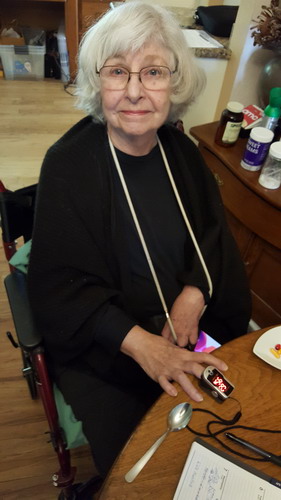 Ellen had a food reaction the other day to a new brownie mix at Costco. The brownies were both paleo and keto, which is very rare. The ingredients looked just like the same ingredients I us at home when I make my own from scratch. So this morning we have been testing each ingredient individually
(since I had every ingredient) using the Coco Pulse Test. I give Ellen about 1/2 teaspoon full of each ingredient every 15 minutes while she watches her pulse to see if the pulse rate jumps up more than 8 beats per minute. This is super easy with a pulse oximeter. One key is to be sure that your pulse is not already showing a reaction from an earlier food, so do this first thing in the morning on an empty stomach. Ellen had a food reaction the other day to a new brownie mix at Costco. The brownies were both paleo and keto, which is very rare. The ingredients looked just like the same ingredients I us at home when I make my own from scratch. So this morning we have been testing each ingredient individually
(since I had every ingredient) using the Coco Pulse Test. I give Ellen about 1/2 teaspoon full of each ingredient every 15 minutes while she watches her pulse to see if the pulse rate jumps up more than 8 beats per minute. This is super easy with a pulse oximeter. One key is to be sure that your pulse is not already showing a reaction from an earlier food, so do this first thing in the morning on an empty stomach.
|
| |
| |
| |
Sugar induces brain damage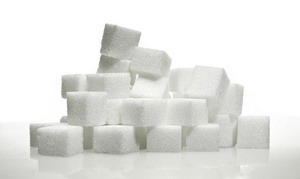 In spite of being most everyone's favorite food, sugar induces brain damage. This damage is most significant during childhood and adolescence. This damage was found to involve the thinking, emotional control, and memory regions of the brain. Some of the worst damage occurred when the mothers consumed sugar while carrying and nursing the kids. The authors of this study felt that giving sugar to young people
put then at risk for developing mental health disorders.
In spite of being most everyone's favorite food, sugar induces brain damage. This damage is most significant during childhood and adolescence. This damage was found to involve the thinking, emotional control, and memory regions of the brain. Some of the worst damage occurred when the mothers consumed sugar while carrying and nursing the kids. The authors of this study felt that giving sugar to young people
put then at risk for developing mental health disorders.
Sugar
_____________________________________________
"Of all possessions a friend is the most precious."
~ Herodotus
__________________________________
Massive fraud found hiding Roundup  toxicity
The primary research institute (IBT) responsible for testing the toxicity of thousands of chemicals in foods and pesticides/herbicides has been lying all this time. Around 90% of the research they performed has been found to be fraudulent, as in just made up to help big companies get their products past FDA regulations. toxicity
The primary research institute (IBT) responsible for testing the toxicity of thousands of chemicals in foods and pesticides/herbicides has been lying all this time. Around 90% of the research they performed has been found to be fraudulent, as in just made up to help big companies get their products past FDA regulations.
IBT fraud
________________________
"Circumstances rule men; men do not rule circumstances."
~ Herodotus
_________________________________________________
Stress makes girl babies twice as likely Although they have come up with a lot of possible explanations as to why, what they do know is that when the stress hormone cortisol is high before, during, and immediately after pregnancy, the mother is twice as likely to give birth to a girl.
Although they have come up with a lot of possible explanations as to why, what they do know is that when the stress hormone cortisol is high before, during, and immediately after pregnancy, the mother is twice as likely to give birth to a girl.
Girl babies
_________________________________________
"Force has no place where there is need of skill."
~ Herodotus
_____________________________
Our address is 9725 Fair Oaks Blvd. suite A
Our hours are M - F 10 to 3:30
Finding the new location is very easy. Coming from highway 50 up Sunrise Blvd, you turn left and go up a block. We are on the right hand side - the building just past the Subway Sandwich shop. If you are coming down Sunrise from the Mall area then just turn right on Fair Oaks Blvd and up a block on the right.
If you are coming from the Roseville area you could come down Sunrise Blvd, but that is a long trek. It is probably shorter time wise to come down Auburn Blvd - San Juan Ave like you have been for the Sunset office, but instead of turning left at Sunset, keep going straight 3 more lights to Fair Oaks Blvd and turn left. Go down 2 lights to New York Ave, go through the intersection, and immediately turn into the turn lane once the center
divider ends. We are on the left.
You are free to reprint this article in your newsletter as long as you include the following statement in the same size type and color:
"This article appears courtesy of Fair Oaks Health News, offering natural and healthy solutions for body, mind and soul. For a complimentary subscription,
visit http://www.fairoakshealth.com"
Referral doctor for when we are out of town: Jennifer Webb DC
Jennifer Webb DC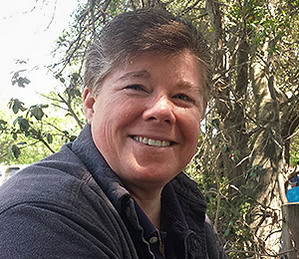
6216 Main St. suite C1
Orangevale
988-3441
|
| |
|
|
|
_______________
to check on old newsletters
_______________
About Dr. DeLapp
|
Dr. DeLapp has been a philosopher, non-force Chiropractor, medical intuitive, and health innovator for over 35 years. He began experimenting with medical intuition in 1972 while studying physics at UC Davis. In addition to physics he designed and completed an individual major in the philosophy and psychology of education. Shortly after he choose to pursue a career in the only
truly health oriented profession available at that time, Chiropractic. He graduated with honors in 1981 with his doctorate and opened a private practice.
Since that time he has continued his research into the effects of consciousness and learning on health.
He developed the Biomagnetic Retraining system for correcting movement abnormalities.
Since 1991 he has focused on developing a powerful system for uncovering and assisting the mind-body connection in health and personal growth. The in-depth coaching, guided by the subconscious direction from the body, is called Heartflow. It is available at Fair Oaks Health.
Fair Oaks Healing
& Arts Center
Staff
 Dr David DeLapp DC
Dr David DeLapp DC
Chiropractor
Ellen Flowers FGM
Spiritual Life CoachEnergetic Nutritionist
Health Care Coordinator
Susan Richardson
Office Manager
Front Desk
Sherry Herrera
Front Desk Person
Susan McDonald
Catherine Cummings
Purity Oil Spray
Pain Relief
Essentials
CBDs plus 9 essential oils

Ear Drops

Eye Drops

Gut Healer

Sinus Rinse
Powder

Balanced Salt
|
|
